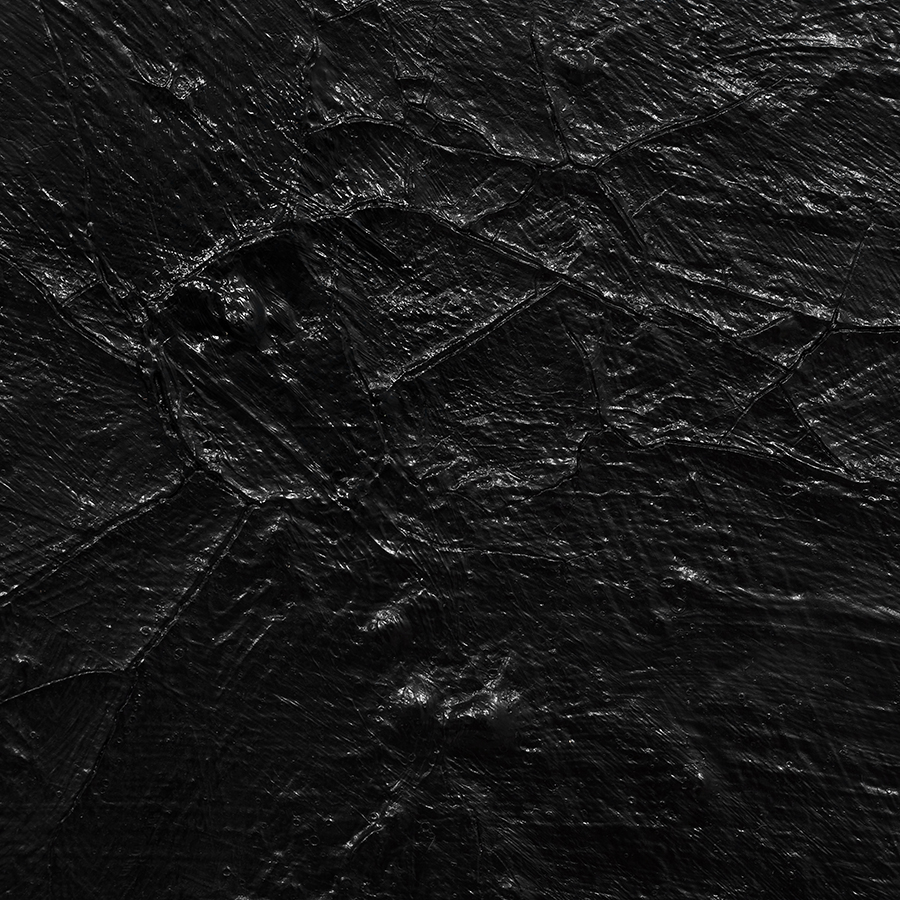
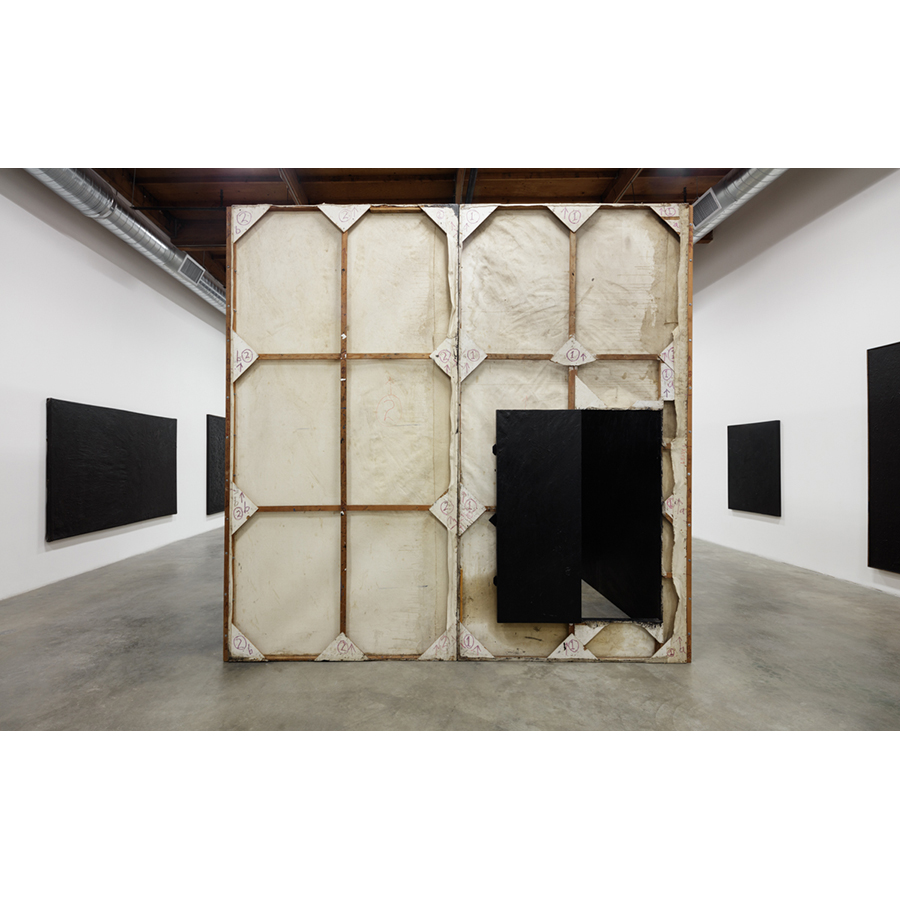
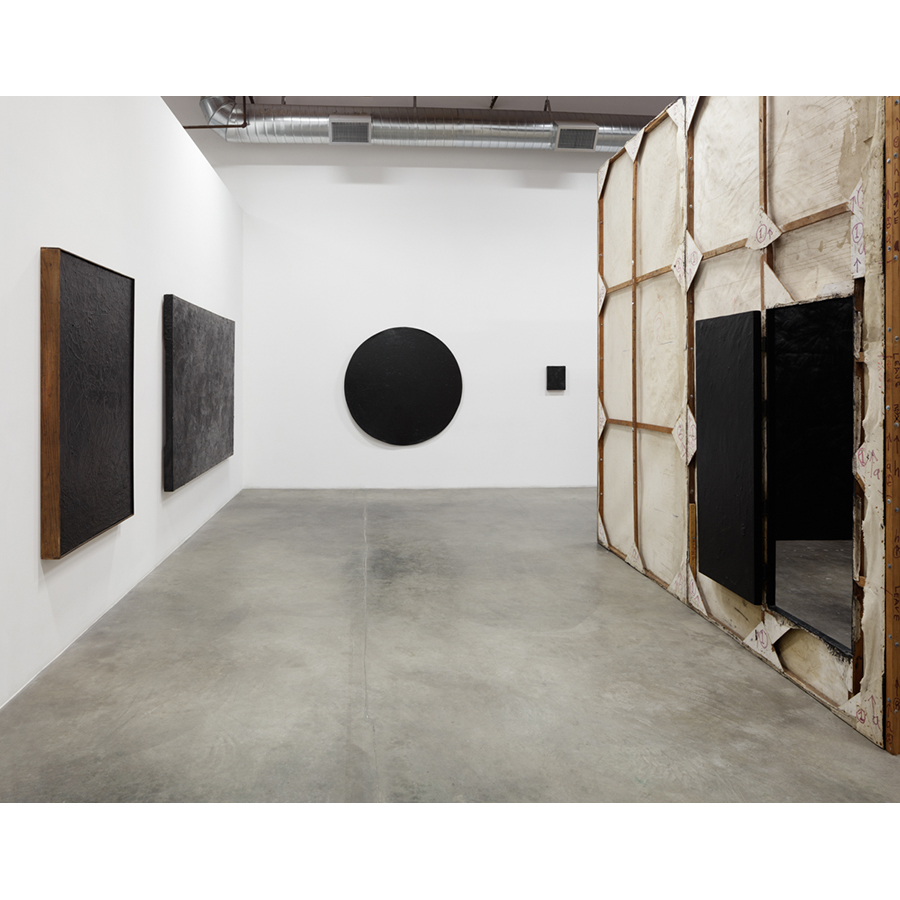
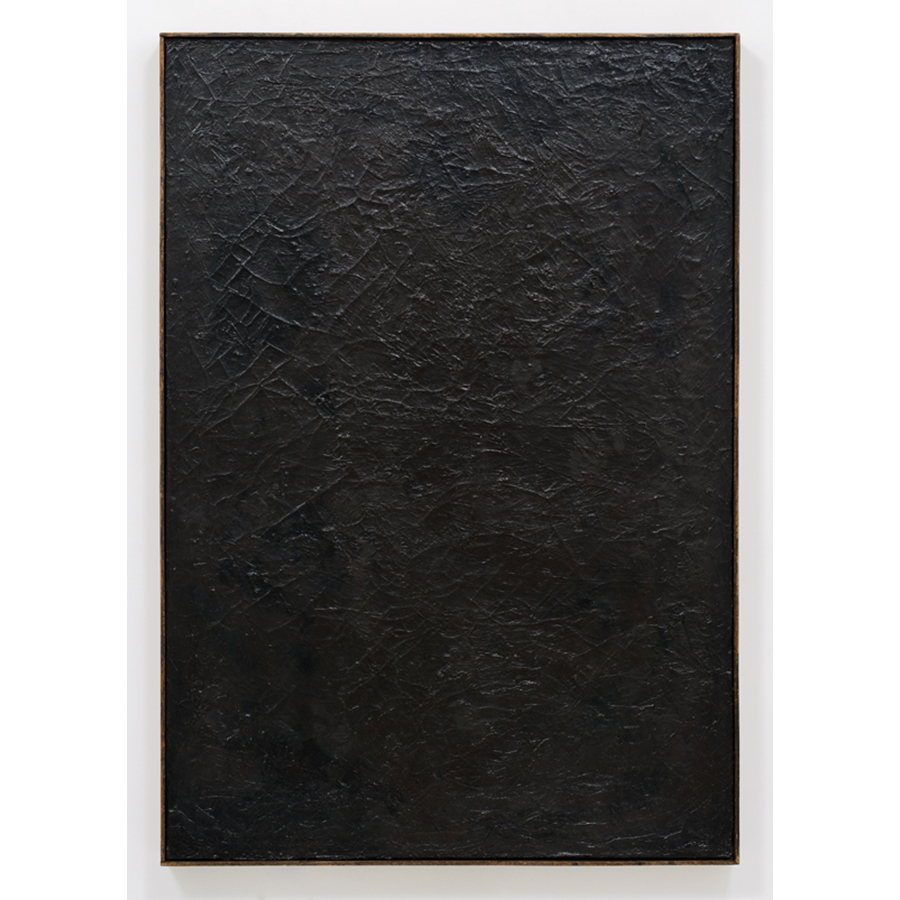
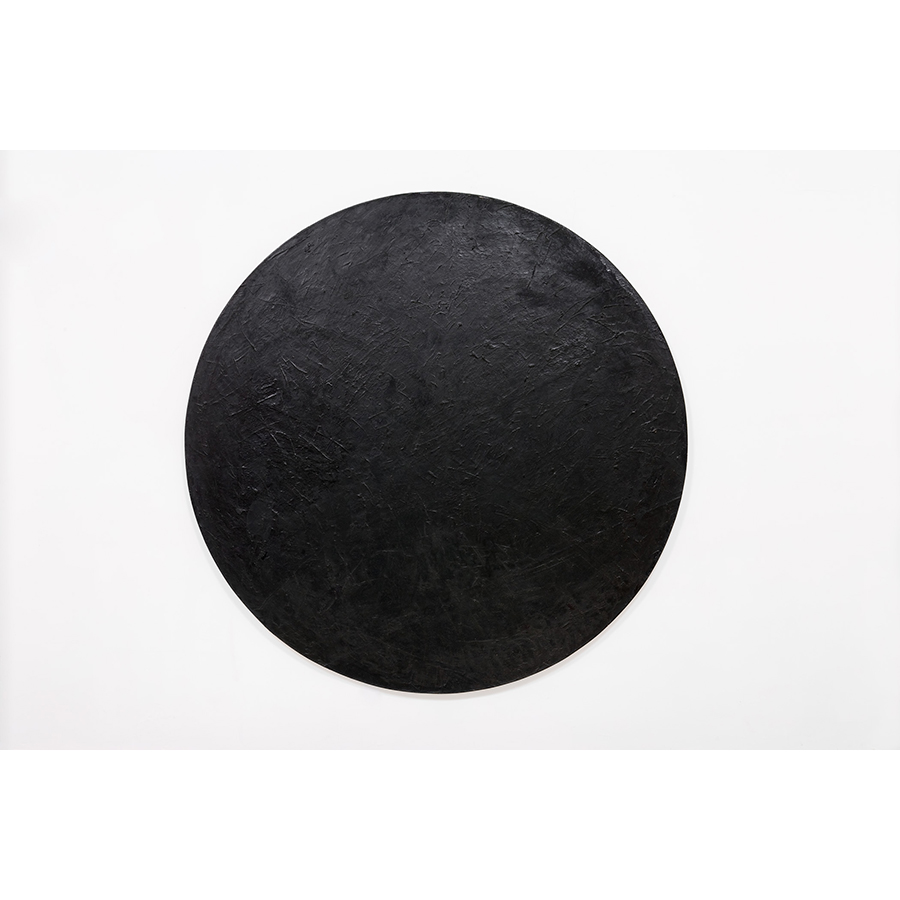
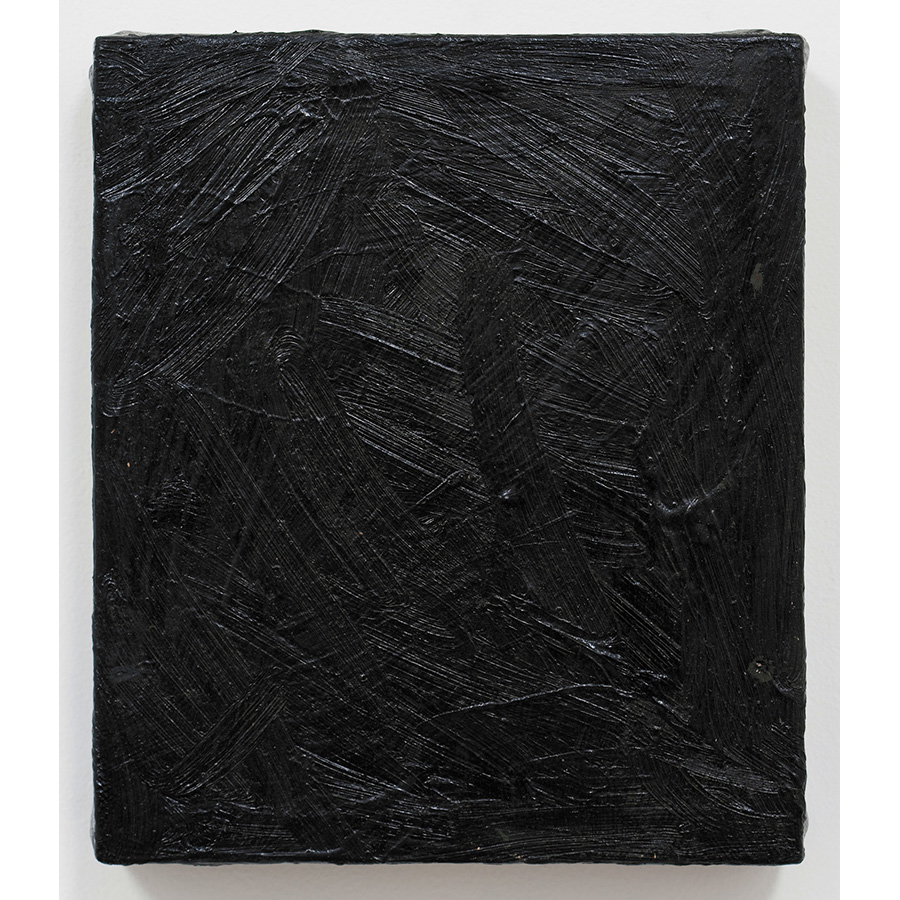
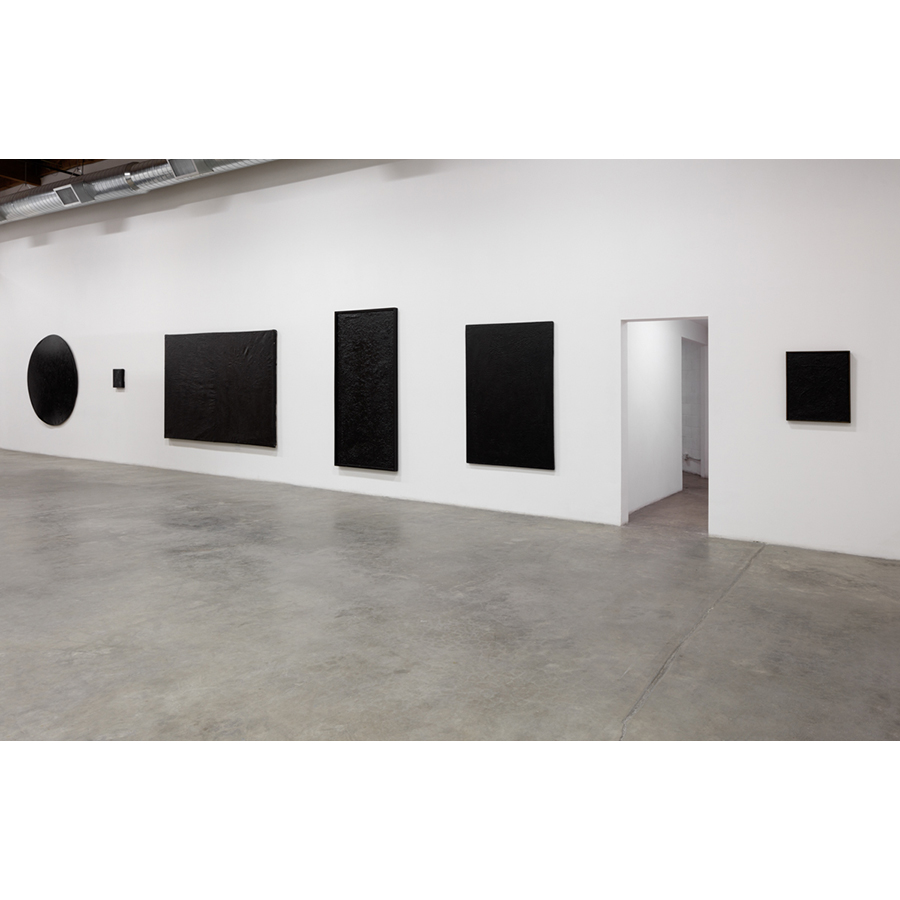
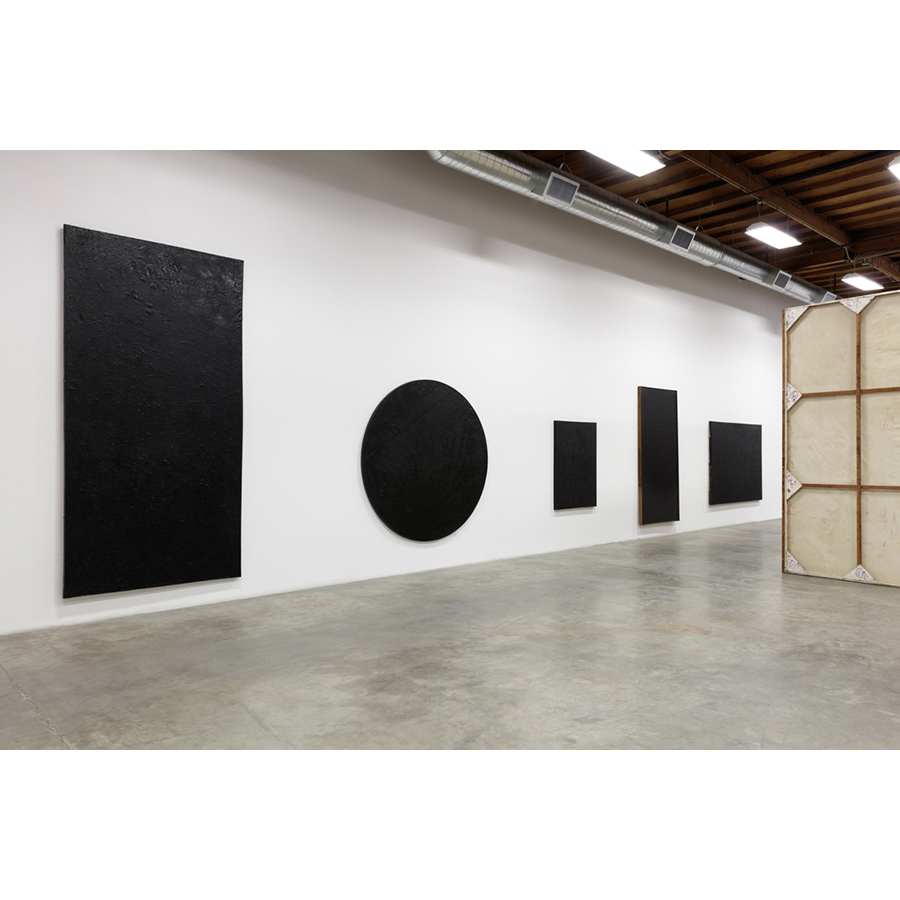
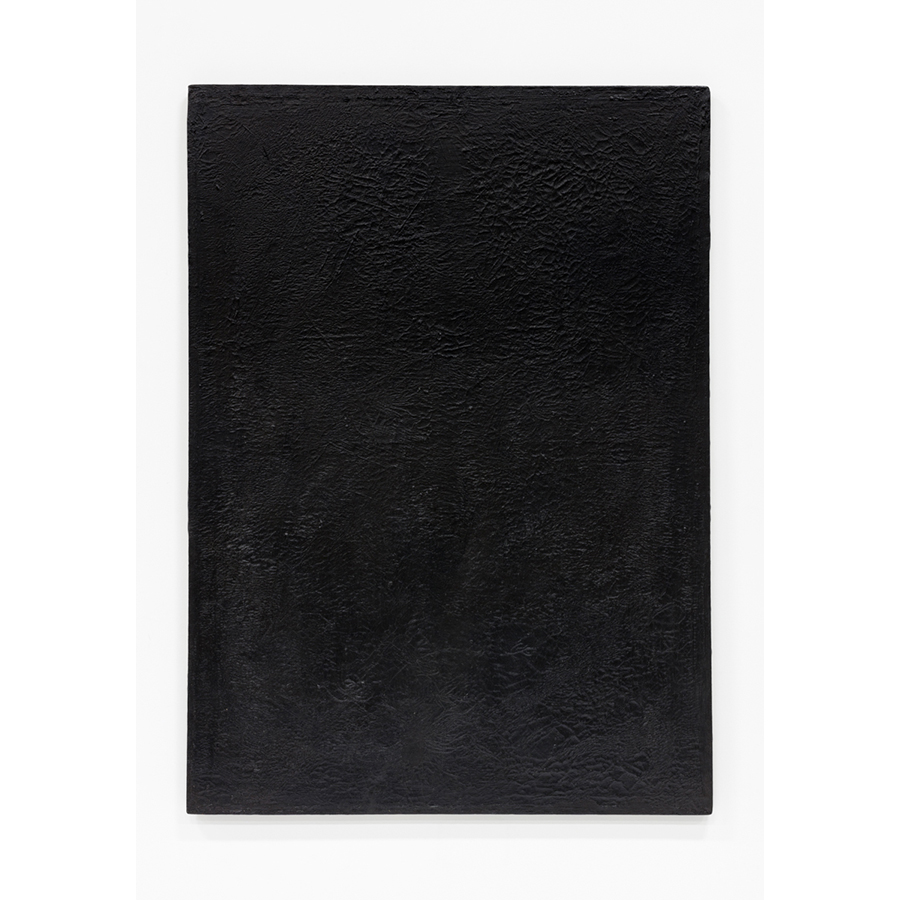
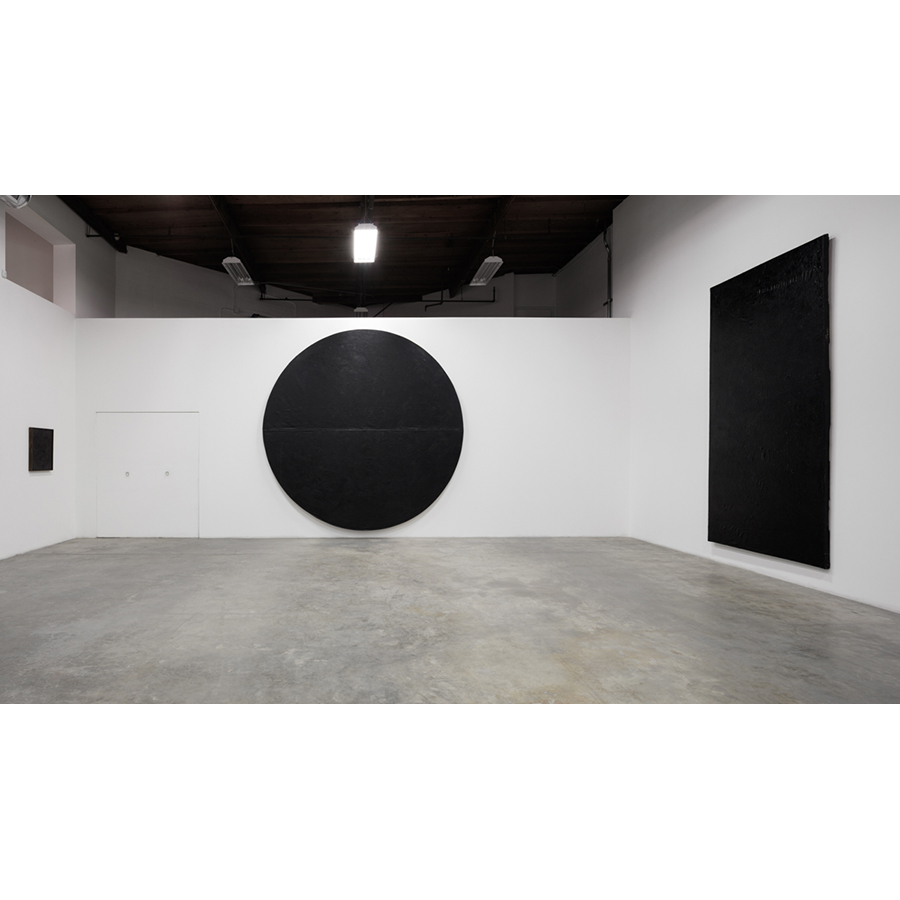
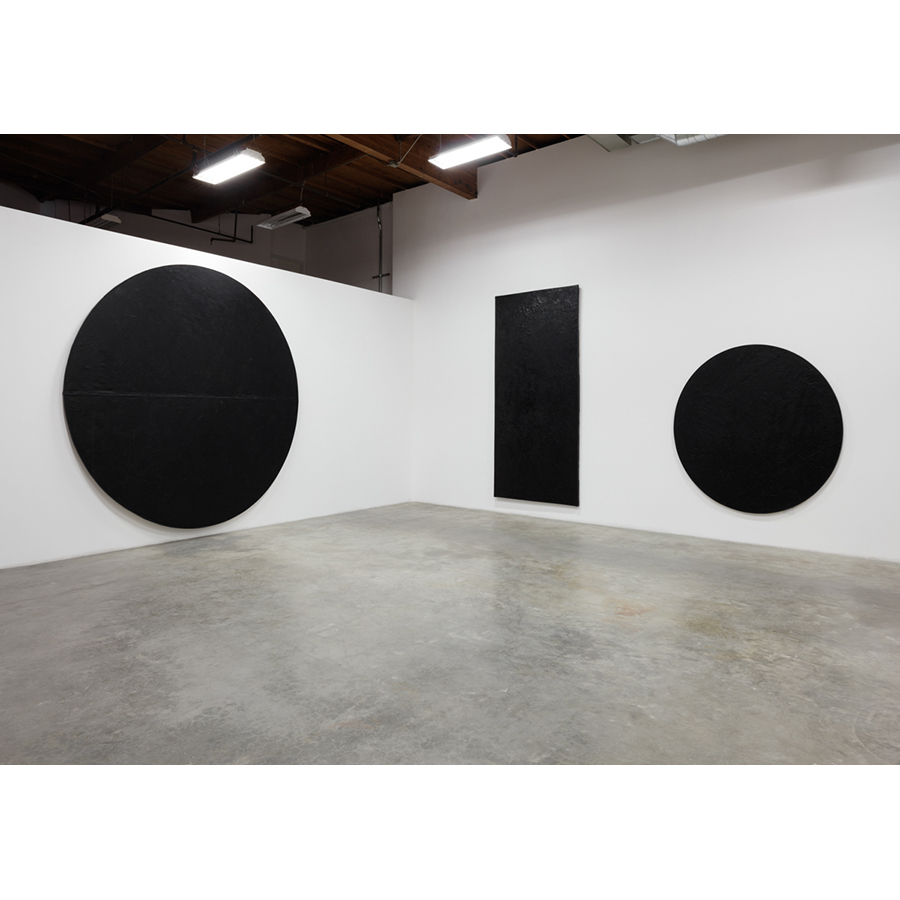
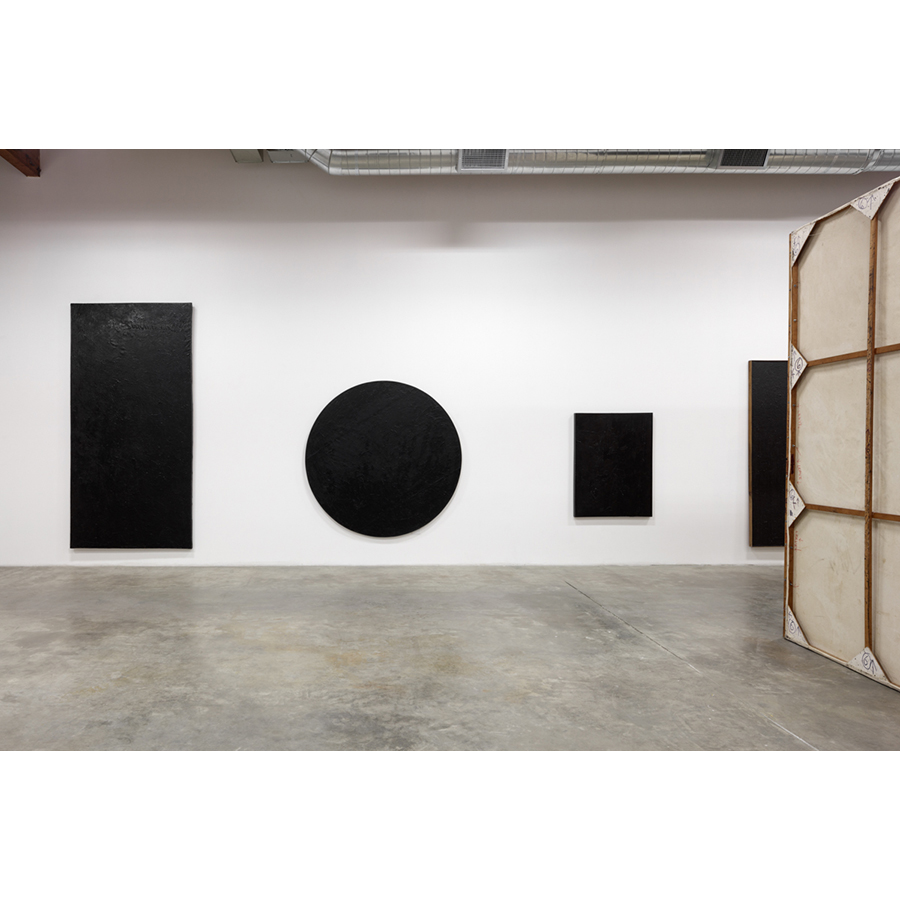
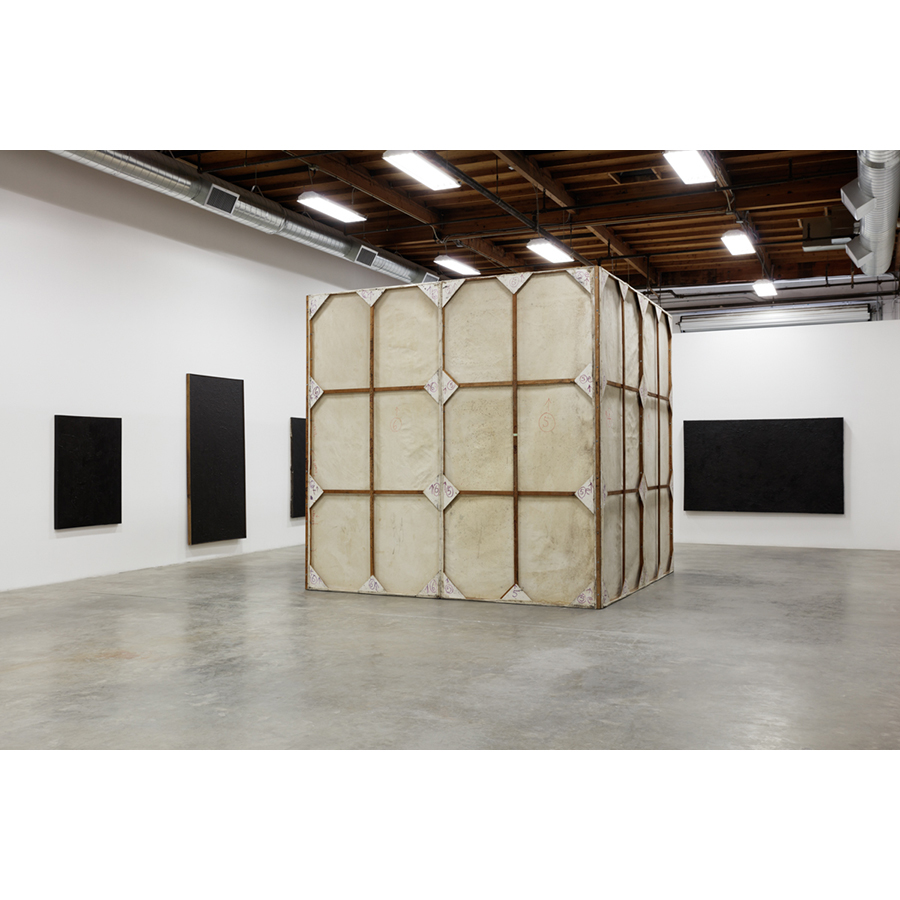
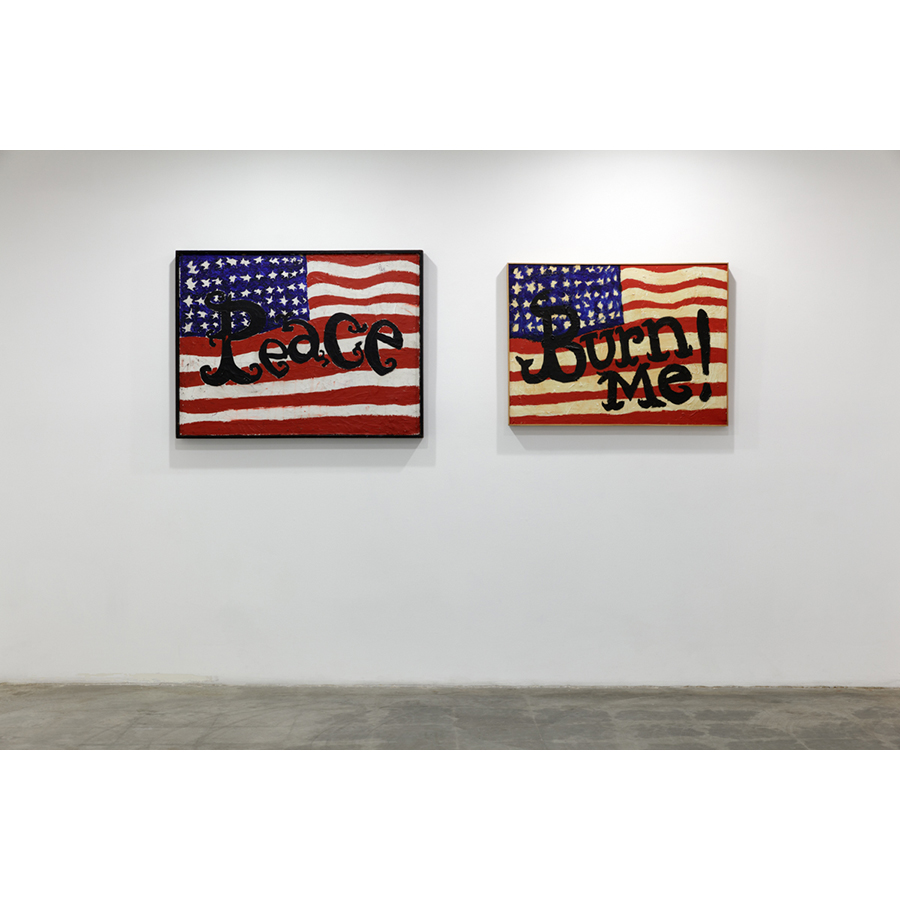
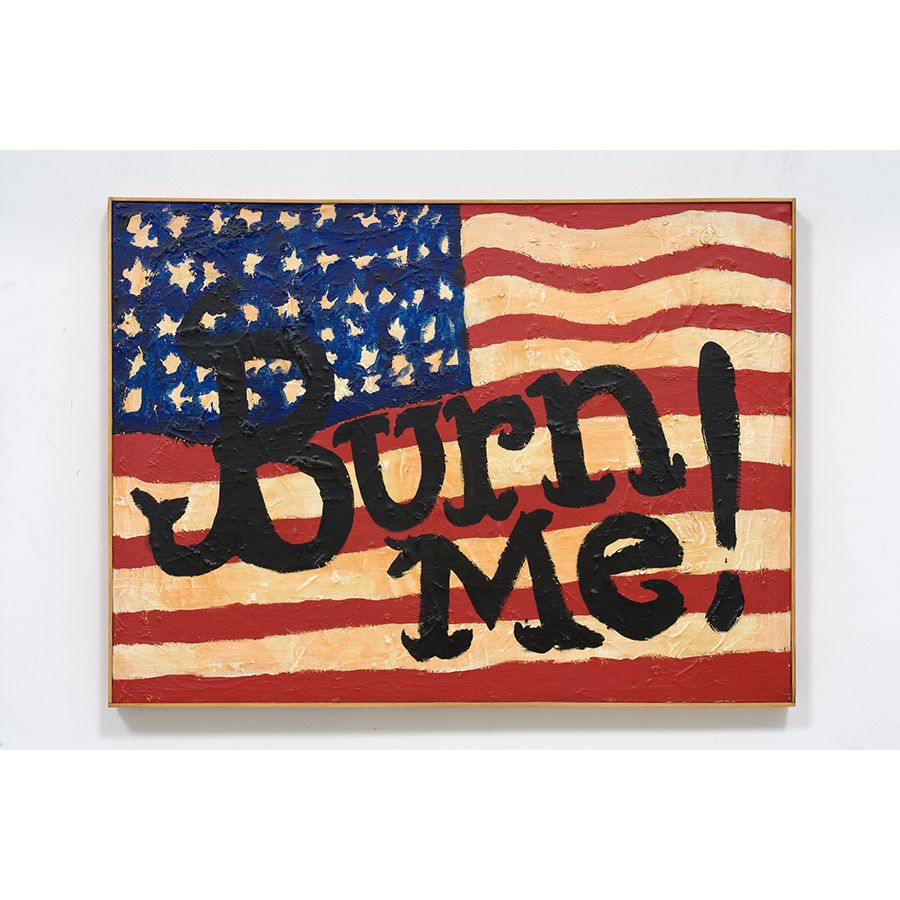
FOR IMMEDIATE RELEASE
Wally Hedrick
The Absence of Light: Black Paintings (1957-2003)
April 30 – June 25, 2016
Opening Reception: Saturday, April 30, 4-7pm
Yes, again. In 2008, The Box exhibited Wally Hedrick’s War Room (1967/68-2002) and eight years later we are proud to show this monumental piece of anti-war art history again. What began in 1967 as a protest against the escalating conflict in Vietnam, War Room consists of 8 eleven-foot tall canvases, bolted together and constructed into a cube that can be entered by viewers through a canvas doorway. War Room is surrounded by fourteen of Hedrick’s black paintings, themselves demarcations of war and individual forms of protest.
Hedrick, himself a veteran of the Korean War, held fervent anti-war beliefs that became evident starting in 1957, when he painted III Vietnam Series, beginning his black paintings in earnest, which continued until his death in 2003. Painting a viscous layer of black over his old paintings (it was also rumored that he painted over others artists’ paintings, as well), this powerful gesture asserted personal and political resistance; Hedrick once said: “Since there is no way for me to affect any political decision, what I’ll do is I’ll deny Western Culture my contribution.“[1]
A number of the works in this exhibition have been covered in black paint multiple times. War Room and Rondo I (1968, 1991, 2002), for example, were first painted black during the Vietnam War, and then subsequently repainted on two other occasions, each time in protest to three different wars initiated by the United States while Hedrick was alive (Vietnam, the Gulf War and the U.S. Occupation of Iraq). Some of the canvases on display were only painted twice, while paintings like Irac 2002: It$ 4 Oil + SUV’s (2002) and Between Iraq and a Hard-on/2002®So Damn, Who’s Sane?/4 a Kinder Gentler Nation (2002) were made specifically in response to the Iraq War. As seen in the titles of these paintings, Hedrick also honed a clever use of language and symbols; the sobering, critical gesture is humanized by the artists’ mordant sense of humor.
Gathering such a large body of work creates a sensorial experience of the texture and enveloping quality of the work. Hedrick made all his own canvases, which allowed for experimentation in shape and scale, in addition to texture. This exhibition includes three circular rondos, ranging from 68-inches to 11 feet in diameter, contrasting with Black Bush Burning (2002), which is only 10 x 12 inches square. From broad brush strokes to dense, thick impasto, to a dappled, glossy sheen, the surface of each canvas varies, as well. The only constant is the black - Hedrick has created an absence of light, the absence of insight. He has created a space of contemplation.
Wally Hedrick (1928-2003) grew up in Pasadena, CA, and after military service relocated to Northern California, where he lived until his death. Hedrick taught at the San Francisco Art Institute for ten years between 1960-1970, and was a strong voice of political activism throughout his time there. He stopped teaching for two semesters, hanging a large black sign that read “Classes cancelled until the end of the war,” – it is rumored that he was fired for circulating a petition to students protesting America’s involvement in Vietnam. Hedrick, who was part of the infamous Sixteen Americans exhibition at MOMA in 1959, also played a pivotal role in the in the Beat movement. He was married to Jay DeFeo for 10 years in 1950s/60s, a time of creative preeminence for both artists, with DeFeo painting The Rose (1958-66) while Hedrick co-founded The Six Gallery from what was previously known as the King Ubu Gallery. Hedrick’s solo exhibitions include the de Young Museum in San Francisco, Gallery Paule Anglim, San Francisco. Selected group exhibitions include The Historical Box at Hauser & Wirth; Sunless, curated by Walead Beshty at Thomas Dane Gallery, London; Paul McCarthy’s Low Life Slow Life, curated by Paul McCarthy at the Wattis Institute for Contemporary Art, San Francisco; and Beat Culture and the New America, 1950-1965 at the Whitney Museum of American Art, New York. Hedrick’s work is in collections at the Museum of Modern Art, New York, San Francisco Museum of Modern Art, and the de Young Museum.